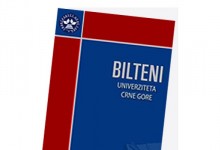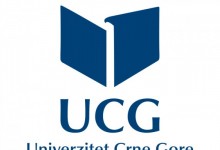Music Academy / GUITAR / CHAMBER MUSIC II
| Course: | CHAMBER MUSIC II/ |
| Course ID | Course status | Semester | ECTS credits | Lessons (Lessons+Exercises+Laboratory) |
| 4953 | Obavezan | 2 | 2 | 1+1+0 |
| Programs | GUITAR |
| Prerequisites | Completed undergraduate guitar studies and enrollment in specialist studies. Prior experience in ensemble performance (duo, trio, quartet) is desirable. |
| Aims | develop artistic and interpretative skills in chamber music performance. - To improve mutual communication, rhythmic precision, and ensemble dynamics. - To familiarize students with the repertoire of various periods and styles for ensembles involving the guitar. - To create a concert program that unites technical security and collective expression. |
| Learning outcomes | The student will be able to: - develop the ability for shared musical expression within a chamber ensemble (duo, trio, quartet, or mixed ensemble); - apply principles of musical communication, listening, phrasing, and interpretative collaboration in ensemble performance; - understand the structure and style of various musical periods through collective performance; - design a concert program and interpretation that reflects balance, tone color, and ensemble unity; - present a musical work at a professional level during public performances and the final exam. |
| Lecturer / Teaching assistant | Prof. Danijel Cerović |
| Methodology | Work in ensembles (duo, trio, quartet), analytical and interpretative rehearsals, score analysis, individual part practice, joint rehearsals, and concert presentations. |
| Plan and program of work | |
| Preparing week | Preparation and registration of the semester |
| I week lectures | Introduction to the course. Formation of ensembles and repertoire selection (Giuliani, Sor, Bogdanović, Brouwer, Assad, Piazzolla). Style analysis and part distribution. |
| I week exercises | Introduction to the course. Formation of ensembles and repertoire selection (Giuliani, Sor, Bogdanović, Brouwer, Assad, Piazzolla). Style analysis and part distribution. |
| II week lectures | Initial phase – collective score reading, tempo and character analysis. Work on communication and ensemble cues. |
| II week exercises | Initial phase – collective score reading, tempo and character analysis. Work on communication and ensemble cues. |
| III week lectures | Coordination of rhythm and dynamics. Work on initial sections of the pieces. Transcriptions of J. S. Bach and D. Scarlatti. |
| III week exercises | Coordination of rhythm and dynamics. Work on initial sections of the pieces. Transcriptions of J. S. Bach and D. Scarlatti. |
| IV week lectures | Interpretative work – balance, tone color, phrasing, and shared breathing. Examples from works by Giuliani and Sor. |
| IV week exercises | Interpretative work – balance, tone color, phrasing, and shared breathing. Examples from works by Giuliani and Sor. |
| V week lectures | Completion of the first stage of repertoire preparation. Analysis of form and part relationships. Introduction to modern compositions (Bogdanović, Brouwer). |
| V week exercises | Completion of the first stage of repertoire preparation. Analysis of form and part relationships. Introduction to modern compositions (Bogdanović, Brouwer). |
| VI week lectures | Work on contemporary repertoire – improvisational elements and rhythmic flexibility. Coordination of complex metric structures. |
| VI week exercises | Work on contemporary repertoire – improvisational elements and rhythmic flexibility. Coordination of complex metric structures. |
| VII week lectures | Midterm – internal public class: performance of one or more shorter works. Evaluation of communication and stage presence. |
| VII week exercises | Midterm – internal public class: performance of one or more shorter works. Evaluation of communication and stage presence. |
| VIII week lectures | Work on transcriptions (Albéniz, Grieg, Debussy). Dynamic contrasts and articulation within the ensemble. |
| VIII week exercises | Work on transcriptions (Albéniz, Grieg, Debussy). Dynamic contrasts and articulation within the ensemble. |
| IX week lectures | Joint rehearsals and musical dialogue. Development of a homogeneous sound and distribution of dynamics within the ensemble. |
| IX week exercises | Joint rehearsals and musical dialogue. Development of a homogeneous sound and distribution of dynamics within the ensemble. |
| X week lectures | Detailed work on a larger form – sonatina or suite. Continuous phrasing and ensemble rubato. |
| X week exercises | Detailed work on a larger form – sonatina or suite. Continuous phrasing and ensemble rubato. |
| XI week lectures | Work on final repertoire sections. Contemporary compositions (Assad, Piazzolla). Analysis of harmonic and rhythmic layers. |
| XI week exercises | Work on final repertoire sections. Contemporary compositions (Assad, Piazzolla). Analysis of harmonic and rhythmic layers. |
| XII week lectures | Program consolidation – technical and interpretative assurance. Practice of transitions and stage behavior. |
| XII week exercises | Program consolidation – technical and interpretative assurance. Practice of transitions and stage behavior. |
| XIII week lectures | General rehearsal with the complete program. Focus on precision, interaction, and musical flow. |
| XIII week exercises | General rehearsal with the complete program. Focus on precision, interaction, and musical flow. |
| XIV week lectures | Final concert preparations. Progress analysis and improvement suggestions. |
| XIV week exercises | Final concert preparations. Progress analysis and improvement suggestions. |
| XV week lectures | Final exam concert – performance of the complete program: one work from the 19th century, one contemporary composition, and one transcription. |
| XV week exercises | Final exam concert – performance of the complete program: one work from the 19th century, one contemporary composition, and one transcription. |
| Student workload | |
| Per week | Per semester |
| 2 credits x 40/30=2 hours and 40 minuts
1 sat(a) theoretical classes 0 sat(a) practical classes 1 excercises 0 hour(s) i 40 minuts of independent work, including consultations |
Classes and final exam:
2 hour(s) i 40 minuts x 16 =42 hour(s) i 40 minuts Necessary preparation before the beginning of the semester (administration, registration, certification): 2 hour(s) i 40 minuts x 2 =5 hour(s) i 20 minuts Total workload for the subject: 2 x 30=60 hour(s) Additional work for exam preparation in the preparing exam period, including taking the remedial exam from 0 to 30 hours (remaining time from the first two items to the total load for the item) 12 hour(s) i 0 minuts Workload structure: 42 hour(s) i 40 minuts (cources), 5 hour(s) i 20 minuts (preparation), 12 hour(s) i 0 minuts (additional work) |
| Student obligations | Regular attendance at rehearsals, active participation in ensemble work, preparation of individual parts, and participation in public classes and concerts. |
| Consultations | By arrangement with the professor, according to the published schedule. |
| Literature | - Mauro Giuliani: Duos and Trios for Guitars, Tecla Editions - Fernando Sor: Duos for Two Guitars, Chanterelle Verlag - Dušan Bogdanović: Trios, Sonatas, Ethnic Cycles - Leo Brouwer: Micropiezas, Toccata, Cuban Landscape, Max Eschig - Sergio Assad: Aquarelle, Jobin Music - Astor Piazzolla: Histoire du Tango (arr.), Edizioni Bèrben - Transcriptions: J. S. Bach, D. Scarlatti, I. Albéniz, E. Granados, E. Grieg, C. Debussy - Contemporary editions and arrangements available at the Academy of Music Library, Cetinje |
| Examination methods | Midterm (internal public class) and final exam (concert performance before a committee). Continuous monitoring of engagement and interpretative progress throughout the semester. |
| Special remarks | |
| Comment | The program may be realized through various ensemble configurations. Repertoire is adapted to the composition and level of the ensemble and may include original works, transcriptions, and arrangements. |
| Grade: | F | E | D | C | B | A |
| Number of points | less than 50 points | greater than or equal to 50 points and less than 60 points | greater than or equal to 60 points and less than 70 points | greater than or equal to 70 points and less than 80 points | greater than or equal to 80 points and less than 90 points | greater than or equal to 90 points |
Music Academy / GUITAR / GUITAR II
| Course: | GUITAR II/ |
| Course ID | Course status | Semester | ECTS credits | Lessons (Lessons+Exercises+Laboratory) |
| 4512 | Obavezan | 2 | 16 | 5+3+0 |
| Programs | GUITAR |
| Prerequisites | Completed undergraduate guitar studies and successfully entrance examination for specialist studies. |
| Aims | - To refine technical and interpretative performance skills. - To deepen analytical understanding of polyphonic and sonata repertoire. - To enhance musical maturity through performing stylistic forms from the Baroque to the contemporary era. - To develop artistic individuality and an independent interpretative voice. |
| Learning outcomes | The student will be able to: - independently develop and integrate technical, musical, and interpretative aspects of performing complex repertoire; - analyze and interpret polyphonic and multi-movement musical forms on the instrument; - express stylistic, formal, and aesthetic awareness through performance and analysis of works from different periods; - connect technical demands with artistic goals of interpretation; - achieve a high artistic level of performance and independently design a concert program |
| Lecturer / Teaching assistant | Prof Danijel Cerović |
| Methodology | Individual lessons, analytical and interpretative work, technical exercises, independent practice, public classes, concerts, and consultations. |
| Plan and program of work | |
| Preparing week | Preparation and registration of the semester |
| I week lectures | Overview of the semester and technical requirements. Major/minor scales through two octaves; thirds and sixths. Introduction to the suite (Bach or Weiss). |
| I week exercises | Overview of the semester and technical requirements. Major/minor scales through two octaves; thirds and sixths. Introduction to the suite (Bach or Weiss). |
| II week lectures | Scales in triads, simultaneous and broken. Work on the first movement of the suite. Etude of choice (Sor, Giuliani). |
| II week exercises | Scales in triads, simultaneous and broken. Work on the first movement of the suite. Etude of choice (Sor, Giuliani). |
| III week lectures | Technical work on tone control and balance. Work on the middle movement of the suite and introduction to the sonata cycle (Giuliani, Sor). |
| III week exercises | Technical work on tone control and balance. Work on the middle movement of the suite and introduction to the sonata cycle (Giuliani, Sor). |
| IV week lectures | Scales in sixths and octaves. Analysis of the formal structure of the sonata. Composition of choice from the 21st century. |
| IV week exercises | Scales in sixths and octaves. Analysis of the formal structure of the sonata. Composition of choice from the 21st century. |
| V week lectures | Chromatic exercises and position shifts. Continuation of the suite and initial phase of the sonata. Control of articulation and sound. |
| V week exercises | Chromatic exercises and position shifts. Continuation of the suite and initial phase of the sonata. Control of articulation and sound. |
| VI week lectures | Technical focus: speed and precision. Development of the second movement of the sonata. Introduction to analysis of contemporary composition (Brouwer, Bogdanović). |
| VI week exercises | Technical focus: speed and precision. Development of the second movement of the sonata. Introduction to analysis of contemporary composition (Brouwer, Bogdanović). |
| VII week lectures | Midterm – technical assessment: scales, cadences, etude of choice. Discussion on interpretation of the suite. |
| VII week exercises | Midterm – technical assessment: scales, cadences, etude of choice. Discussion on interpretation of the suite. |
| VIII week lectures | Work on fugues from J. S. Bach’s works (BWV 995–998, 1006a). Etude of choice. Further development of the sonata (Turina, Castelnuovo-Tedesco). |
| VIII week exercises | Work on fugues from J. S. Bach’s works (BWV 995–998, 1006a). Etude of choice. Further development of the sonata (Turina, Castelnuovo-Tedesco). |
| IX week lectures | Connecting technical and expressive goals. Work on contemporary composition. Scales combined with arpeggios. |
| IX week exercises | Connecting technical and expressive goals. Work on contemporary composition. Scales combined with arpeggios. |
| X week lectures | Harmonic analysis of the sonata. Use of contrasts in dynamics and tone color. Work on phrasing and expression in the suite. |
| X week exercises | Harmonic analysis of the sonata. Use of contrasts in dynamics and tone color. Work on phrasing and expression in the suite. |
| XI week lectures | Work on interpretation of a modern 21st-century composition. Tone control and color. Analysis of contemporary styles. |
| XI week exercises | Work on interpretation of a modern 21st-century composition. Tone control and color. Analysis of contemporary styles. |
| XII week lectures | Technical and musical consolidation of the program. Corrections in the sonata and suite. Preparation for public performance. |
| XII week exercises | Technical and musical consolidation of the program. Corrections in the sonata and suite. Preparation for public performance. |
| XIII week lectures | Complete work on the program: suite, sonata, and contemporary piece. Development of stage presence and memory. |
| XIII week exercises | Complete work on the program: suite, sonata, and contemporary piece. Development of stage presence and memory. |
| XIV week lectures | General rehearsal – technical and interpretative check. Progress analysis and feedback for the final exam. |
| XIV week exercises | General rehearsal – technical and interpretative check. Progress analysis and feedback for the final exam. |
| XV week lectures | Final rehearsal and exam program: scales and cadences; suite of choice (Weiss or Bach); sonata of choice; composition from the 21st century. |
| XV week exercises | Final rehearsal and exam program: scales and cadences; suite of choice (Weiss or Bach); sonata of choice; composition from the 21st century. |
| Student workload | |
| Per week | Per semester |
| 16 credits x 40/30=21 hours and 20 minuts
5 sat(a) theoretical classes 0 sat(a) practical classes 3 excercises 13 hour(s) i 20 minuts of independent work, including consultations |
Classes and final exam:
21 hour(s) i 20 minuts x 16 =341 hour(s) i 20 minuts Necessary preparation before the beginning of the semester (administration, registration, certification): 21 hour(s) i 20 minuts x 2 =42 hour(s) i 40 minuts Total workload for the subject: 16 x 30=480 hour(s) Additional work for exam preparation in the preparing exam period, including taking the remedial exam from 0 to 30 hours (remaining time from the first two items to the total load for the item) 96 hour(s) i 0 minuts Workload structure: 341 hour(s) i 20 minuts (cources), 42 hour(s) i 40 minuts (preparation), 96 hour(s) i 0 minuts (additional work) |
| Student obligations | Regular attendance at individual lessons, continuous work on technical and interpretative programs, active participation in public classes, and preparation for the midterm and final exam. |
| Consultations | By arrangement with the professor, during office hours announced on the notice board and the academy website. |
| Literature | - J. S. Bach: Cello Suites and Lute Suites (BWV 995, 996, 997, 998, 1006a, 1007–1012) - Sylvius Leopold Weiss: Suites, available editions - Fernando Sor: Complete Works for Guitar, Tecla Editions - Mauro Giuliani: Complete Works for Guitar, Tecla Editions - Dušan Bogdanović: Sonatas and cycles - Leo Brouwer: Obras completas, Max Eschig - Joaquín Turina: Sonata, available editions - Cyril Scott: Sonatina - Mario Castelnuovo-Tedesco: Sonata, available editions |
| Examination methods | Midterm (technical assessment) and final exam (performance of the complete program before a committee). Continuous evaluation of progress throughout the semester. |
| Special remarks | The program is adapted to the individual abilities and artistic profile of each student. Selected works may be performed during public classes and concerts. |
| Comment |
| Grade: | F | E | D | C | B | A |
| Number of points | less than 50 points | greater than or equal to 50 points and less than 60 points | greater than or equal to 60 points and less than 70 points | greater than or equal to 70 points and less than 80 points | greater than or equal to 80 points and less than 90 points | greater than or equal to 90 points |




-01.jpeg&w=220&h=150)






